
by Rita Baker | Jun 15, 2017 | Marketing
If you are starting a company in global fast-paced markets where the competition will be coming from everywhere, or even harder, transforming a long-existing company that is now facing global competition, you need to read this.
In the last few years globalisation increased the pace of innovation in most markets. Hence, predicting future consumer behaviours with traditional market research tools and techniques is not only difficult, it is now nearly impossible.
The yearly market study, based on historical data, has long been the tool on which a large portion of the important decisions have been based on. Although still useful to get an overall picture on your industry, historical data is not suited for the important decision making job in fast-paced markets that are highly competitive.
In order to make quick, pertinent decisions efficiently, you need a different type of information. Given there are many ocean’s worth of information out there, you need to know which information to focus on to ensure you are at the top of your decision-making game.
The market information you don’t need
Statistical market data
 Traditionally the first thing one did when doing a market research was to ‘’size the market’’. You’d go to your local library and find census data to identify how many people (or companies)[1] fit in your customer segments. This data was anywhere from one to 5 years old.
Traditionally the first thing one did when doing a market research was to ‘’size the market’’. You’d go to your local library and find census data to identify how many people (or companies)[1] fit in your customer segments. This data was anywhere from one to 5 years old.
Then you’d look at the socio-demographic variables and consumption habits attached to this segment. This data was usually at least 2 to 3 years old. Even when paying big money for market studies done by the big market research firms, you still get information that is, at the very best, 9-12 months old.
This outdate information can send you in a hard concrete wall when you launch products/services that are already outdated when they hit the market. In fast-paced markets this is an almost certain kiss of death; one that will have you spinning and spending all your (and often borrowed) resources, including time and energy, until none are left.
Irrelevant data
 It sounds trite but irrelevant market data, which used to be a small nuisance, can now paralyse a company’s decision making process or at the very least slow it down significantly.
It sounds trite but irrelevant market data, which used to be a small nuisance, can now paralyse a company’s decision making process or at the very least slow it down significantly.
Thanks to the internet, the proliferation of market data applications, tools and connected objects, the amount of market information available is mind boggling. Hence taking the time (and having the expertise) so only (or almost only) relevant data comes in from your pipelines is essential.
The market information you need
This is not a one-size-fits-all proposition. Different organisations will need to focus on different types of information. With this in mind, I’ll elaborate on two of the most common types of information needed to make daily decisions in fast-paced markets.
Customer behaviour information
You need to collect this information throughout your customers’ lifecycle.
- Before they become customers (potential customers – take a look at this previous post to understand the different stages)
- As they are becoming customers (on boarding)
- During the time they are customers (active customers)
- After they finish being your customers ( former customers – focusing on the ones who went to the competition or a substitute solution)
The following table will give you an idea of the various techniques/tools used to gather this information at each stage.

Click for larger image
Competitive landscape information
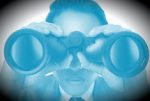 In fast-paced markets one of the best predictor of change in customer behaviour (and often future revenue decline) is new innovative competitors in the market.
In fast-paced markets one of the best predictor of change in customer behaviour (and often future revenue decline) is new innovative competitors in the market.
These innovators will bring more efficient technologies, new processes, and better/different value propositions in the market, most often at an equal or cheaper price. These are all heavy influencers of customer behaviours.
Ideally, you would want to know what competitors are coming into your market before they get there. This isn’t always possible but the investment made (not necessarily very big) to keep as informed as possible will yield some of your most useful market information.
These are some places to find information on upcoming competitors:
- Industry blogs/webzines/magazines
- Accelerators alumni or cohort lists
- VC (venture capitalists) investment lists
- National patent office websites
- Social media
Don’t forget, your competition is global so extend your search to countries where competitors are most likely to come from.
Acting on the information you collect
 Gathering the right information is not enough of course. You need to make it useful for decision-making purposes.
Gathering the right information is not enough of course. You need to make it useful for decision-making purposes.
Before you get to the decision making part, there is an entire path that needs to be followed. The path entails the following:
- Processing and storing the data
- Analysing the data
- Reporting it
- Diffusing it to the right decision-makers at the right time
- Interpreting the crunched data, and finally
- Quickly acting on it
Each of these steps is the subject of a multitude of books and graduate university programs. Many of these steps require different tools, processes and expertise. The task is daunting for certain. In turbulent markets, it is unfortunately essential for your organisation’s survival. As I often tell entrepreneurs I work with the only way to eat an elephant is to start with the first bite.
Where to start
 If you’re building a sky-scraper, you won’t start digging a hole with a shovel. You’ll get the equipment, expertise to run that equipment and (implied) processes that make you as efficient as possible to dig the hole.
If you’re building a sky-scraper, you won’t start digging a hole with a shovel. You’ll get the equipment, expertise to run that equipment and (implied) processes that make you as efficient as possible to dig the hole.
What you won’t do however is to rent every single tool and piece of equipment you need for the entire project on day 1.
Hence, when you are starting your company or re-inventing it, you’ll need to not only get the right tools, expertise and processes in place to act quickly but also do it in the right sequence and get your timing right. Just in time is the way to go on this one.
Again, there is no recipe or one size-fits-all tool that will answer your needs. You’ll initially need to dig around and look for applications that will help you do whatever tasks you need to accomplish to set your market information based decision system. There will be trials, errors and some frustrations along the way. You will become intimately familiar with the term API[2].
Eventually, when the time is right (and it makes financial sense), you’ll migrate towards large integrated software solutions and experience a different set of frustrations. There are no ‘’nothing but blue sky’’ solutions to do this that I know of. I would also be very weary of anyone trying to sell me one.
Organisations, big and small, have traditionally based their important decisions on market studies (I should know I have done hundreds of them). These market studies are no longer the right management tools to keep your competitive edge in fast-paced markets.
Market research and information management tools that allow you to acquire and maintain constant intimate knowledge of your customers (current and potential) are now essential to making the right decisions for your organisation.
Fast-paced markets that are global and highly competitive require a different type of information, a different approach and different decision making tools in order to make timely decisions. Fast-paced markets require fast-paced decision making ability. Do you have the right tools, processes and competences in your organisation to enable this?
[1] If you are serving B2B markets and your customers are mid to large size companies this is still a valuable approach
[2] Application programming interface: A string of software code that enable two applications to communicate with each other.

by Rita Baker | Apr 18, 2017 | Marketing
The core of every business organisation’s mission is to answer customer needs. In order to do so you must first identify and understand them.
Understanding your customers’ needs is essential but superficial knowledge is not enough to ensure your organisation’s profitability. To achieve product/market fit, the point where you answer needs better than your competitors, you must get to a deeper level of understanding of those needs.
Benefits of understanding customer needs
An added bonus to mastering customer needs (and providing a solution that fulfills them) is that every marketing dollar spent will yield higher returns than those of your competitors, who don’t have the same depth of knowledge.
A deeper level of understanding your customers’ needs will also ensure an overall better customer experience, which we already saw in a previous post on the customer experience journey, leads to higher profitability.
Ok, so now that you are convinced understanding customer needs is in your organisation’s best interest, the question you may be asking is how to go about mastering them.
First you have to identify the needs you will be fulfilling (hint; don’t stop at the needs attached directly to your product/service, also look at the ones surrounding the entire customer experience). Once you have zoomed in on the needs to fulfill, you must not only understand the needs but the whole story around them.[1] This process requires lots of effort, time and knowledge of data gathering techniques. It isn’t as straightforward as it may seem.
As a marketer a huge part of my role, aside from finding the right customers, is to identify and understand their needs. Over the years, I learned that there are three steps to any quest aiming to either identify or understand customers’ needs.
Those steps are; Listen, observe, and empathise
Listen
 The very first thing you should do when you have a business idea is to talk informally with potential customers. This mostly means listen to their answers. It also helps you figure out who your early adopters are. If it’s not possible for you to talk directly to potential customers, find people who know your potential customers inside out, and talk with them.
The very first thing you should do when you have a business idea is to talk informally with potential customers. This mostly means listen to their answers. It also helps you figure out who your early adopters are. If it’s not possible for you to talk directly to potential customers, find people who know your potential customers inside out, and talk with them.
Don’t forget to set objectives for your conversation. Examples of conversation objectives are; to see whether the needs you think exist actually do, how they are being filled and the relative importance of those needs. In order to maximise the amount of information you take in, not only do you have to limit how much talking you will do, but you need the proper mindset. Your mind should be open and devoid of as many filters as possible. Always remember that explaining your project in length and your view of the world is just taking time away from achieving your goal. Listen.
On a side note, many of the entrepreneurs I meet are worried that someone will steal their idea before they get a chance to develop it. Unless you have a truly patentable solution (very few are), and potential customers can either beat you to market (they already operate a company in the same field) or spill the beans (to an existing competitor), you have nothing to worry about. Honestly, initial business ideas are very rarely marketable. Even if they were, almost no one wants to put in the blood, sweat, tears and go through the hell that starting a new business entails. Furthermore, even if they did, they’d most likely end up with a completely different business than yours in the end. Lastly if the threat of theft is real, there are still ways to explore the needs of potential corporate customers without spilling your own beans.
Please do not let the fear of someone stealing your business idea prevent you from engaging with potential customers.
Observe
 Observation is essential to identify less obvious needs and understand all pertinent customer needs at a deeper level. Asking potential customers won’t yield the information you seek because people don’t or can’t always tell you the truth.
Observation is essential to identify less obvious needs and understand all pertinent customer needs at a deeper level. Asking potential customers won’t yield the information you seek because people don’t or can’t always tell you the truth.
There are many categories of observation techniques.
Natural observation
Natural observation techniques allow you to observe your potential customers while they are naturally fulfilling the needs you want to address. Ideally, without them noticing you too much so their behaviours are not altered.
Such observation experiments will yield huge amounts of customer knowledge. Hence you need to ensure you set observation goals for your experiments. Your observation goals can pertain not only to your subjects’ actions but also their interactions, environments, and the tools they use.
You will most likely need to repeat such experiments many times to take in all the knowledge you will need. Alternatively, you can task multiple people to observe the same situation while giving them different observation goals.
Two of my favorite natural observation techniques are shadowing and A day in the life.[2]
Directed observation
These techniques are associated with a goal of understanding a specific thought process or behaviour in a given circumstance.
They require putting the customer in a specific situation or assigning him, or her, a task and then observing. This can be followed by a question period to help interpret what you observed. It can be done face to face, remotely with cameras or on the web (such as A/B testing).
Third person observation
This technique is used in addition to one of the previous ones where the observer is someone who has a vision of the world that is significantly different from you or anyone in your industry. This technique yields much richer interpretation/insights from the data you collect.
Empathise
 Whenever possible, put yourself in your customers’ shoes or, even better; take the time to get to know some of your favorite customers personally. This will enable a relationship of trust and maybe even friendship (personal bonus for you) to develop over time.
Whenever possible, put yourself in your customers’ shoes or, even better; take the time to get to know some of your favorite customers personally. This will enable a relationship of trust and maybe even friendship (personal bonus for you) to develop over time.
Get involved in activities or causes your customers are passionate about. This will give you an even deeper understanding of their values and what is important to them.
Sharing your customers’ values is a requirement to attract them into your community. If you are unsure of what I am referring to here, see this previous post on community marketing.
The 360 view of customer needs
 Applying all of these techniques to understand your customers’ needs is required to get a 360 degree view of them. Using many different perspectives to master your customers’ needs will yield rich and actionable information. It will also facilitate innovation in your organisation.
Applying all of these techniques to understand your customers’ needs is required to get a 360 degree view of them. Using many different perspectives to master your customers’ needs will yield rich and actionable information. It will also facilitate innovation in your organisation.
Customer Feedback Flow
 Striving to understand customer needs is a continuous process. Set up processes and assign resources in your organisation to make it an integral part of your business activities.
Striving to understand customer needs is a continuous process. Set up processes and assign resources in your organisation to make it an integral part of your business activities.
These processes can be as simple as a quick questionnaire you send out on a regular basis, or an automatic feedback one, after a certain task is completed. Analytics reports, comments on social medias summaries or a managed (live or online) community feedback or observation reports are all valid continuous feedback processes that can yield precious information on your customers’ needs.
Be aware that this feedback is highly valuable to your organisation, if you act on it. Hence, reward your customers adequately (often a simple thank you is enough) for sharing their thoughts and concerns.
Mastering the understanding of customer needs is no small task. Your rewards for listening, observing and empathising with your customers, will be a tighter product/market fit, greater customer satisfaction and higher profitability.
[1] Needs are always dependant other factors. E.g. The need for a given medicine will be dependant on experiencing specific symptoms at a level that requires relief and not being allergic or prone to adverse effects to said medicine.
[2] The following book describes these techniques : This is Service Design Thinking – M. Stickdorn, J. Schneider et al. – John Wiley & Son

by Rita Baker | Dec 21, 2016 | Innovation, Lean Startup, Marketing
It’s the end of the year already. It went by incredibly fast. This is the time to look back and identify what needs to be fixed. It’s also the time to be grateful for all that we were able to achieve.
One of the things I am always very grateful for is the knowledge I gain during the year. Important sources for the knowledge I pick up are the books and articles I read.
I have to admit that I didn’t have as much time to read this year as I got involved in many (maybe too many) projects. I did however manage to read some very good books on marketing, innovation and Lean Startup.
As I did last year, I am sharing with you some of the ones I especially liked.
Best Reads on Marketing
I didn’t keep up with all that is new in marketing this year. It’s nearly impossible to do so. I tuned in to a few webinars that helped me focus my readings.
I read mostly on mobile marketing (various aspects), influencer as well as community marketing. Community marketing is a strategy that isn’t as easy to implement as one might think. Here is a post I wrote on how to find a profitable community marketing partner.
 Again this year, I found that my most interesting marketing reads came from blog posts on mainly two sites; eMarketer and HubSpot
Again this year, I found that my most interesting marketing reads came from blog posts on mainly two sites; eMarketer and HubSpot
 Speaking of HubSpot it is one of the case study in Sean Ellis’s book; Growth Engines: Case Studies of How today’s Most Successful Startups Unlock Extraordinary Growth.
Speaking of HubSpot it is one of the case study in Sean Ellis’s book; Growth Engines: Case Studies of How today’s Most Successful Startups Unlock Extraordinary Growth.
Through ten case studies, including Yelp, Uber, LinkedIn and HubSpot, Ellis explains the different types of growth engines and the contexts in which they worked best for those companies.
Although I read Growth Engines to better understand a concept that is integral to Lean Startup, this book offers some very valuable marketing lessons. It also touches on growth hacking, a term coined by Ellis. It inspired me to write a post on what growth hacking is and isn’t.
 Another book that I thoroughly enjoyed was UX Strategy by Jamie Levy. Having been a Product Manager at a time where UX was but one part of the job description, it was great to delve into the depths of UX strategy.
Another book that I thoroughly enjoyed was UX Strategy by Jamie Levy. Having been a Product Manager at a time where UX was but one part of the job description, it was great to delve into the depths of UX strategy.
Whether you are starting a new venture to create the killer app, or trying to innovate in an existing small, medium or large business, this book is a must read before you start. It can help you define a winning value proposition. It also guides yourr competitive analysis and helps you see which features you need to focus on.
The book is an easy read and doesn’t require any prior knowledge on UX design or app development.
Best Reads on Innovation
I was invited to a university workshop on blockchain earlier this year. Given I knew nothing on the topic I figured that it would be a great opportunity to learn. Montreal, where Baker Marketing is located, is a hotbed for blockchain research and development. The workshop did teach me the basics of blockchain but left me wanting to know more (a lot more, this is exciting stuff and definitely a game changer) about how this new technology could be used.
 One of the researcher at the workshop suggested Blockchain Revolution: How the Technology behind Bitcoin is Changing Money, Business and the World, by Don and Alex Tapscott. It was exactly what this non scientific reader needed. The Tapscotts explain the concept in very simple terms. They also explore a large number of applications for blockchain. They clearly show how significant a game changer this technology could be.
One of the researcher at the workshop suggested Blockchain Revolution: How the Technology behind Bitcoin is Changing Money, Business and the World, by Don and Alex Tapscott. It was exactly what this non scientific reader needed. The Tapscotts explain the concept in very simple terms. They also explore a large number of applications for blockchain. They clearly show how significant a game changer this technology could be.
In Spring I also contributed to the organisation of the Montreal edition of the Intrapreneurship Conference.
During the conference one of the keynote speakers was Guillaume Hervé. Hervé is a veteran practitioner of intrapreneurship. He contributed to several corporate spinoffs in the aeronautics and health sectors. In case you are not familiar with the term, intrapreneurship is entrepreneurship adapted to large enterprise.
 Intrapreneurship is however not the same as entrepreneurship. These differences are the focus of Hervé’s book Winning at Intrapreneurship: 12 Labors to Overcome Corporate Culture and Achieve Startup Success.
Intrapreneurship is however not the same as entrepreneurship. These differences are the focus of Hervé’s book Winning at Intrapreneurship: 12 Labors to Overcome Corporate Culture and Achieve Startup Success.
Based on the 12 labors of Hercules, Winning at Intrapreneurship looks at the traps, pitfalls and myths of innovating in large businesses. Hervé saw them all in his career as an intrapreneur. He shares with us some tricks of the trade on how to avoid and debunk them. You can read more on this topic on the post I wrote titled Entrepreneurs as Corporate Innovators.
Best reads on Lean Startup
 Continuing on the innovation in large business topic, Eric Ries published a second book this year. It’s titled the Leader’s Guide to Adopting Lean Startup at Scale.
Continuing on the innovation in large business topic, Eric Ries published a second book this year. It’s titled the Leader’s Guide to Adopting Lean Startup at Scale.
First, Eric innovated in the way he published the book. He financed the book with a Kickstarter campaign. The backers were invited to join the Leader’s Guide community (managed by Mightybell). He used the community to test hypotheses about the content and cover of his book. Yep, he did it the Lean Startup way.
Unfortunately however, Eric only printed as many books as there were backers who pledged the sufficient amount. It isn’t available anywhere for purchase now that the Kickstarter campaign is over. You can however get a free digital copy if you know someone who invested in the campaign.
The Leader’s Guide is based on Eric’s experience (as well as that of some backers) on implementing Lean Startup in large corporations, like GE, and government organisations (like the White House).
I especially like the format of the book. Symbols are used in the margins throughout the chapters in order to quickly understand what the text pertains to. The coach’s Guide sections, for example, are about tips and subtleties in implementing the concepts.
It’s truly a guide that you will go to when implementing a Lean Startup approach to a large organisation.
Eric also announced that he will be publishing a third book next year. It’s tentative title is The Startup Way.
 We were lucky to have another great Lean Startup practitioner write his second book this year. Ash Maurya penned Scaling Lean: Mastering the Key Metrics for Startup Growth.
We were lucky to have another great Lean Startup practitioner write his second book this year. Ash Maurya penned Scaling Lean: Mastering the Key Metrics for Startup Growth.
As a follow up to his first book, Running Lean, Ash is now looking at how to use metrics to scale your business once you have found the elusive product/market fit.
His rigorous approach to using key metrics to track your progress and focus your efforts has shown great results in many successful startups.
 Finally, I want to mention a website whose author consistently publishes great Lean Startup material. Tristan Kromer’s Grasshopper Herder is chalk full of Lean Startup ideas, tools and resources. Tristan was until recently one of the organisers of the San Francisco Lean Startup Circle.
Finally, I want to mention a website whose author consistently publishes great Lean Startup material. Tristan Kromer’s Grasshopper Herder is chalk full of Lean Startup ideas, tools and resources. Tristan was until recently one of the organisers of the San Francisco Lean Startup Circle.
If you are starting a new project and interested in putting Lean Startup into practice take a look at the series of posts on implementing Lean Startup. It is meant to guide you along your journey when you first start your project.
This concludes this year’s crop of my best reads on marketing, innovation and Lean Startup. Maybe some of them will become your favorites.
Thank you for taking the time to read Techno Marketing this year. I hope you take some time off during the holidays to rest and replenish, as we will.
Baker Marketing offers you its best wishes for the holidays. May 2017 be filled with health, serenity and lots of successful projects.


by Rita Baker | Nov 16, 2016 | Marketing
Would you have taken a bet that offered you 10 to 1 odds that anyone but Donald Trump would be elected President back in July 2016? I’m guessing you would have. I know I would have and probably bet a bundle. After all, it was obvious that most Americans thought Trump’s views were too extreme. The British parliament even debated on banning Trump from the UK. Well we’d both be poorer now and scratching our heads as how this outcome came to be.
This scenario is similar to one where an entrepreneur believes that everyone will want to buy the product he/she is making. After all, the product solves an obvious and important problem that so many people have. You wouldn’t think twice about buying it, so why would anyone else.
Let’s see the factors that can lead us to be so bad at predicting our customers needs.
There are realities you don’t even know exist
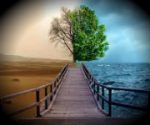 Experience, environment and nature, are responsible for shaping beliefs and thought processes. They differ from one person to the next.
Experience, environment and nature, are responsible for shaping beliefs and thought processes. They differ from one person to the next.
Although nature (human biology) may be similar from one person to the next, environments are not. This is harder to remember given most people we exchange with on a daily basis share similar environments to ours. Experience, which is the sum of all the various situations we were in and how we reacted to them since birth, differs even more greatly from one person to the next.
Although we all know that others don’t think like we do or have the same reality, we sometimes forget to what extent they differ from ours.
This explains why designing an experiment, that captures other people’s realities, is so difficult. It also explains why it is so difficult to interpret other people’s answers accurately. The less we know about our respondents’ experiences and current reality, the more difficult it is to interpret their answers. Hence, we will tend to fill in the blanks with elements of our own reality. This will give us a distorted view.
The lesson learned here is:
- try to understand your respondent’s environment as much as you can before asking them questions
It will ensure you ask the right questions with words that will mean the same to them as they mean to you. It will also enable you to interpret their answers correctly.
Things change, sometimes overnight
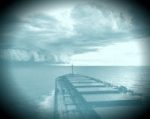 Unforeseen events happen and change realities and the choice set we have. In the political sphere this could mean email scandals. In the product world it could mean new regulations, new competitors or technologies that pop up overnight.
Unforeseen events happen and change realities and the choice set we have. In the political sphere this could mean email scandals. In the product world it could mean new regulations, new competitors or technologies that pop up overnight.
These new realities can sometime remove existing problems. They can also give potential customers more choices as how to solve their problems. Finally, they can leave them so uncertain about their choices, that they will need a lot more time and energy to evaluate their options. This situation is well captured in the innovation adoption curve.
The lessons learned here are
- You need to act fast on survey results as environments can change quickly
- When the respondents’ choice sets are in flux, you may have some of them who can’t or won’t make choices
We are willing to put up with a lot to stay true to our identity
 Certain behaviours we have take root in our own self image. When US voters identify themselves as Republicans or Democrats they don’t only refer to how they cast their ballot. They often refer to a part of their sets of beliefs. However strongly they feel against a representative of the party, they won’t vote against their identity. They’ll just find a way to rationalise their decision. This is part of the concept of cognitive dissonance.
Certain behaviours we have take root in our own self image. When US voters identify themselves as Republicans or Democrats they don’t only refer to how they cast their ballot. They often refer to a part of their sets of beliefs. However strongly they feel against a representative of the party, they won’t vote against their identity. They’ll just find a way to rationalise their decision. This is part of the concept of cognitive dissonance.
Some consumers may see the value proposition you offer them clearly but won’t purchase your product. Because part of their identity ties in to doing the work the way they always have done it.
The lesson learned here is:
- You may need more time and effort to convince your customers to adopt your product/service when it affects their identity
Why do polls/surveys get it wrong?
 We won’t reveal (to strangers) actions, beliefs or views that we think will affect their image of us negatively. This is cognitive dissonance at work.
We won’t reveal (to strangers) actions, beliefs or views that we think will affect their image of us negatively. This is cognitive dissonance at work.
This is why it is so important to test your market on their actions rather than on what they say. Especially when you don’t know how important cognitive dissonance is for a particular choice.
The lesson learned here is:
- Cognitive dissonance will skew your survey results significantly
Here is one last lesson to keep in mind. However wrong you may have been at predicting an outcome there is always something you can learn from the thought process that led you there. You can learn from it and improve your future predictions.
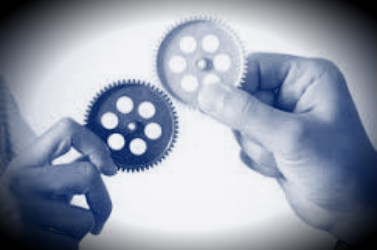
by Rita Baker | Aug 22, 2016 | Marketing
In a previous post we looked at community marketing. As a reminder, community marketing is a set of tactics used to involve your customers and/or prospect customers (subsets or all of them) and their network with your organisation.
 Community Marketing Partnerships
Community Marketing Partnerships
One of the foundations of community marketing is partnering with other organisations. These partnerships are used to leverage all of your marketing and promotional activities to your potential customers. These partnerships can be with your suppliers, clients, customers (either corporate customers or the companies your customers own), or non-profit organisations.
The previous post also showed that, aside from being profitable when done right, community marketing is a great way to:
- Increase positive brand association
- Achieve community leadership
- Obtain great insights in your customers needs
- Drive innovation
- Reduce your marketing costs
- Get free advertising
- Get you and your team to feel great about your job
So yes, community marketing sounds great, well on paper at least. In reality it requires the right partners in order to achieve a return on your investments.
The question then becomes:
 How do I know what the right community marketing partner looks like?
How do I know what the right community marketing partner looks like?
Like any other business partnership, there is no ‘’one-size fits all’’ answer to this question. Furthermore, time can transform an excellent community marketing partner into a negative ROI partner. Hence keeping track of the costs, revenues and benefits associated with a partnership is essential.
In order to identify criteria to help find a good community marketing partner for your company I will use two sources. The first are the studies done by non profit organisations that have applied community marketing strategies for decades to achieve their objectives. The second will be the various community marketing experiences I have been a part of or observed in the last few years.
The following are some of the most important elements you have to look for when searching for a community marketing partner.
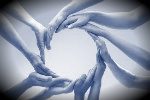 Shared values
Shared values
This criterion is by far the most important element to look for when searching for a new community marketing partner.
Your most important corporate values must be shared with your partners. Otherwise something will inevitably go very wrong during the course of your partnership. Usually, issues will occur sooner rather than later.
An example of this was a large food blog that strongly valued leaving the smallest carbon footprint possible. Most of their blog posts transpired this value. Their hosting provider, a community marketing partner of the blog, expanded into a new facility that used significantly more energy than the previous one they were located in. When the hosting company announced on social media it had no intention to undertake any projects to minimize their carbon footprint, it created a strong backlash in the blog readers’ community. Readership dropped more than 25% in the following 3 months. No other events could account for this exodus.
Eventually the blog owners not only lost a community partner but had to find another hosting provider. This project was of course very costly and could have been avoided had the hosting partner shared similar values.
This example brings about another lesson that was learned. Some of your values can generate a significantly higher cost structure for your company. Make certain you are ready to take on those costs before trumpeting your values to your customers.
 A committed partner
A committed partner
Just as any other type of partnership, your partner must be committed to the relationship. In a community marketing partner, this translates into having resources dedicated to managing the partnership and the joint projects.
Partners who also dedicate resources to measuring the outcomes of the partnership will often be easier to work with. The data they accumulated will generally lead to rational discussions with clear demands.
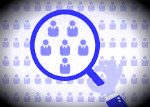 You are going after the same customer segments
You are going after the same customer segments
The closer, the match between the customers your business is aiming at to the ones your partners aim at, the better.
The whole idea of community marketing is to gain greater exposure, at a lower cost, to new potential customers. Hence, it would be worthless in that regard to partner with companies that don’t address your target markets.
Also, the closer or more complementary the needs they address to the ones you do in your markets, the better the synergy you will get out of a partnership.
Hence, if your product/service fills a need that is created by a partner’s product/service or creates a need that can be fulfilled by a partner, the partnership has the potential to provide maximum ROI.
An example for our food blog would be to partner with kitchen appliances or dinnerware companies as well as exercise/health related blogs that share similar values.
 A reputation that is at least as good as yours
A reputation that is at least as good as yours
Community marketing is strongly based on social media presence by the partners. Hence, you will be looking for a partner that is not only adept at managing its own social media presence but one that has a reputation that will not tarnish yours.
Before signing with a new community marketing partner you need to do a thorough review of all of its social media presence. You also need to know who its other partners are and what their reputation is. The stronger the community your future partner is a part of, the more profitable the partnership can be.
There are many other criteria that are important when choosing a community marketing partner. The previous three are, in my experience, some of the most important ones at the outset of a relationship.
In a future post, we’ll take a look at where to find the best community marketing partners. In the meantime, if you have any questions about community marketing strategy or implementation you are welcome to contact us.

by Rita Baker | May 18, 2016 | Marketing
Ils deviennent omniprésents dans notre quotidien. Les objets connectés se retrouvent sous forme de gadgets telle la bouteille d’eau intelligente. De façon encore plus fréquente sous forme de bracelets ou maillots de sport qui gardent le compte de nos activités physiques et de notre rythme cardiaque. Leur point commun; ils amassent une masse grandissante de données sur différents aspects de notre quotidien et les transmettent à un serveur.
D’ici 2020, on peut s’attendre à ce que plus de 20 milliards d’objets connectés soient en circulation. Ils généreront des pétaoctets de données ayant la capacité de tracer un portrait de chaque minute de notre quotidien. Dans leur ensemble, l’analyse de ces données révélera des informations qui permettront aux fabricants d’optimiser leurs produits. Ce qui fait saliver les analystes marketing encore plus abondamment par contre est l’analyse au niveau de l’individu de ces données.
 Nombreux analystes, dont ceux de McKinsey, évoquent une 4ième révolution industrielle. Ils prévoient une société où tous les produits et services vendus seront personnalisés afin de répondre aux besoins de chaque consommateur. Ce qui implique que le marketing de masse se fera au niveau de l’individu et non d’un segment.
Nombreux analystes, dont ceux de McKinsey, évoquent une 4ième révolution industrielle. Ils prévoient une société où tous les produits et services vendus seront personnalisés afin de répondre aux besoins de chaque consommateur. Ce qui implique que le marketing de masse se fera au niveau de l’individu et non d’un segment.
Le message sera personnalisé en fonction du profil de l’individu, de son environnement, du contexte voir même du moment. De toute évidence, il ne sera pas créé par un humain puisque nous n’avons pas la capacité d’assimiler et de traiter une telle quantité de données à la vitesse requise. En ce qui a trait aux divers modes de livraison des messages publicitaires, je vous laisse les imaginer.
En poussant cet exercice de prospective à sa limite on peut même en arriver à la conclusion qu’une intelligence artificielle filtrera les messages publicitaires et ne laissera passer que ceux qui correspondent à nos besoins et désirs conscients voir même inconscients.
Revenons du monde de la science fiction et regardons comment nous effectuons le marketing des objets connectés aujourd’hui en examinant les stratégies du bracelet Fitbit et du thermostat intelligent d’Alphabet (Google), le Nest.
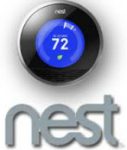 On pourrait penser que Google, champion du big data, serait avant-gardiste dans la commercialisation du Nest. En fait, il n’en est rien. Alphabet a embauché en 2013 Doug Sweeny, ancien VP marketing de Levis (les jeans), afin de commercialiser le Nest. Non seulement Sweeny ne veut-il pas exploiter les données d’utilisation amassées par Nest dans sa stratégie marketing il opte pour une stratégie des plus traditionnelles pour un produit de grande consommation. Nest focalise depuis les dernières années, quasi uniquement, à croître son réseau de distribution physique (et non en ligne). Nest fait peu de publicité dans les médias et n’a aucune stratégie de marketing personalisé.
On pourrait penser que Google, champion du big data, serait avant-gardiste dans la commercialisation du Nest. En fait, il n’en est rien. Alphabet a embauché en 2013 Doug Sweeny, ancien VP marketing de Levis (les jeans), afin de commercialiser le Nest. Non seulement Sweeny ne veut-il pas exploiter les données d’utilisation amassées par Nest dans sa stratégie marketing il opte pour une stratégie des plus traditionnelles pour un produit de grande consommation. Nest focalise depuis les dernières années, quasi uniquement, à croître son réseau de distribution physique (et non en ligne). Nest fait peu de publicité dans les médias et n’a aucune stratégie de marketing personalisé.
Quant à Fitbit, cotée en bourse depuis 2015, sa stratégie marketing est beaucoup plus évoluée et exploite, bien que de manière limitée, les données amassées par ses utilisateurs.
Fitbit ut ilise ses données pour développer sa gamme de produits qui compte près d’une dizaine de bracelets. Fitbit déploie également des campagnes marketing hautement personnalisées en adaptant le contenu de chaque courriel qu’elle envoie à ses millions de clients.
ilise ses données pour développer sa gamme de produits qui compte près d’une dizaine de bracelets. Fitbit déploie également des campagnes marketing hautement personnalisées en adaptant le contenu de chaque courriel qu’elle envoie à ses millions de clients.
De plus, Fitbit inclut dans sa stratégie le marketing communautaire. Outre sa communauté Facebook principale, avec près de 1.5 million de j’aime, Fitbit anime également des communautés pour chacun de ses produits sur de multiples plateformes de médias sociaux. Fitbit commandite aussi de nombreux événements sportifs et créé du contenu numérique destiné à être rediffusé par ses utilisateurs.
Il y a plusieurs autres stratégies marketing particulièrement bien adaptées pour le marketing des objets connectés tel le marketing prédictif, le marketing en temps réel et le co-marketing qui ne sont encore que peu ou pas utilisées dans ce secteur.
Les principaux freins au déploiement de stratégies marketing plus avant-gardistes par les fabricants d’objets connectés sont :
- La perception des consommateurs de l’utilisation de leurs données à des fins de commercialisation
- La convergence requise des compétences statistique, informatique, analytique, psychologique, sociologique et marketing
- L’Absence de formation des analystes marketing dans les stratégies de commercialisation utilisant les données de masse (big data)
- Le coût élevé des infrastructures et applications nécessaires à l’analyse de la modélisation des données
Les trois derniers freins expliquent également pourquoi les fabricants d’objets connectés utilisent principalement des fournisseurs externes pour analyser les données et développer leurs stratégies marketing.
Il est évident que le marketing des objets connectés en est encore qu’à ses balbutiements. À défaut d’une innovation de rupture dans le domaine, il faudra attendre de nombreuses années encore avant de voir le marketing des objets connectés se différencier substantiellement du marketing courant.

 Traditionally the first thing one did when doing a market research was to ‘’size the market’’. You’d go to your local library and find census data to identify how many people (or companies)[1] fit in your customer segments. This data was anywhere from one to 5 years old.
Traditionally the first thing one did when doing a market research was to ‘’size the market’’. You’d go to your local library and find census data to identify how many people (or companies)[1] fit in your customer segments. This data was anywhere from one to 5 years old. It sounds trite but irrelevant market data, which used to be a small nuisance, can now paralyse a company’s decision making process or at the very least slow it down significantly.
It sounds trite but irrelevant market data, which used to be a small nuisance, can now paralyse a company’s decision making process or at the very least slow it down significantly. In fast-paced markets one of the best predictor of change in customer behaviour (and often future revenue decline) is new innovative competitors in the market.
In fast-paced markets one of the best predictor of change in customer behaviour (and often future revenue decline) is new innovative competitors in the market. Gathering the right information is not enough of course. You need to make it useful for decision-making purposes.
Gathering the right information is not enough of course. You need to make it useful for decision-making purposes. If you’re building a sky-scraper, you won’t start digging a hole with a shovel. You’ll get the equipment, expertise to run that equipment and (implied) processes that make you as efficient as possible to dig the hole.
If you’re building a sky-scraper, you won’t start digging a hole with a shovel. You’ll get the equipment, expertise to run that equipment and (implied) processes that make you as efficient as possible to dig the hole.


 The very first thing you should do when you have a business idea is to talk informally with potential customers. This mostly means listen to their answers. It also helps you figure out who your early adopters are. If it’s not possible for you to talk directly to potential customers, find people who know your potential customers inside out, and talk with them.
The very first thing you should do when you have a business idea is to talk informally with potential customers. This mostly means listen to their answers. It also helps you figure out who your early adopters are. If it’s not possible for you to talk directly to potential customers, find people who know your potential customers inside out, and talk with them. Observation is essential to identify less obvious needs and understand all pertinent customer needs at a deeper level. Asking potential customers won’t yield the information you seek because people don’t or can’t always tell you the truth.
Observation is essential to identify less obvious needs and understand all pertinent customer needs at a deeper level. Asking potential customers won’t yield the information you seek because people don’t or can’t always tell you the truth. Whenever possible, put yourself in your customers’ shoes or, even better; take the time to get to know some of your favorite customers personally. This will enable a relationship of trust and maybe even friendship (personal bonus for you) to develop over time.
Whenever possible, put yourself in your customers’ shoes or, even better; take the time to get to know some of your favorite customers personally. This will enable a relationship of trust and maybe even friendship (personal bonus for you) to develop over time. Applying all of these techniques to understand your customers’ needs is required to get a 360 degree view of them. Using many different perspectives to master your customers’ needs will yield rich and actionable information. It will also facilitate innovation in your organisation.
Applying all of these techniques to understand your customers’ needs is required to get a 360 degree view of them. Using many different perspectives to master your customers’ needs will yield rich and actionable information. It will also facilitate innovation in your organisation. Striving to understand customer needs is a continuous process. Set up processes and assign resources in your organisation to make it an integral part of your business activities.
Striving to understand customer needs is a continuous process. Set up processes and assign resources in your organisation to make it an integral part of your business activities.
 Again this year, I found that my most interesting marketing reads came from blog posts on mainly two sites; eMarketer and HubSpot
Again this year, I found that my most interesting marketing reads came from blog posts on mainly two sites; eMarketer and HubSpot Speaking of HubSpot it is one of the case study in Sean Ellis’s book;
Speaking of HubSpot it is one of the case study in Sean Ellis’s book;  Another book that I thoroughly enjoyed was
Another book that I thoroughly enjoyed was  One of the researcher at the workshop suggested
One of the researcher at the workshop suggested  Intrapreneurship is however not the same as entrepreneurship. These differences are the focus of Hervé’s book
Intrapreneurship is however not the same as entrepreneurship. These differences are the focus of Hervé’s book  Continuing on the innovation in large business topic, Eric Ries published a second book this year. It’s titled the Leader’s Guide to Adopting Lean Startup at Scale.
Continuing on the innovation in large business topic, Eric Ries published a second book this year. It’s titled the Leader’s Guide to Adopting Lean Startup at Scale. We were lucky to have another great Lean Startup practitioner write his second book this year. Ash Maurya penned
We were lucky to have another great Lean Startup practitioner write his second book this year. Ash Maurya penned  Finally, I want to mention a website whose author consistently publishes great Lean Startup material. Tristan Kromer’s
Finally, I want to mention a website whose author consistently publishes great Lean Startup material. Tristan Kromer’s 

 Experience, environment and nature, are responsible for shaping beliefs and thought processes. They differ from one person to the next.
Experience, environment and nature, are responsible for shaping beliefs and thought processes. They differ from one person to the next. Unforeseen events happen and change realities and the choice set we have. In the political sphere this could mean email scandals. In the product world it could mean new regulations, new competitors or technologies that pop up overnight.
Unforeseen events happen and change realities and the choice set we have. In the political sphere this could mean email scandals. In the product world it could mean new regulations, new competitors or technologies that pop up overnight. Certain behaviours we have take root in our own self image. When US voters identify themselves as Republicans or Democrats they don’t only refer to how they cast their ballot. They often refer to a part of their sets of beliefs. However strongly they feel against a representative of the party, they won’t vote against their identity. They’ll just find a way to rationalise their decision. This is part of the concept of cognitive dissonance.
Certain behaviours we have take root in our own self image. When US voters identify themselves as Republicans or Democrats they don’t only refer to how they cast their ballot. They often refer to a part of their sets of beliefs. However strongly they feel against a representative of the party, they won’t vote against their identity. They’ll just find a way to rationalise their decision. This is part of the concept of cognitive dissonance. We won’t reveal (to strangers) actions, beliefs or views that we think will affect their image of us negatively. This is cognitive dissonance at work.
We won’t reveal (to strangers) actions, beliefs or views that we think will affect their image of us negatively. This is cognitive dissonance at work.
 Community Marketing Partnerships
Community Marketing Partnerships How do I know what the right community marketing partner looks like?
How do I know what the right community marketing partner looks like? Shared values
Shared values A committed partner
A committed partner You are going after the same customer segments
You are going after the same customer segments A reputation that is at least as good as yours
A reputation that is at least as good as yours
 Nombreux analystes, dont ceux de McKinsey, évoquent une 4ième révolution industrielle. Ils prévoient une société où tous les produits et services vendus seront personnalisés afin de répondre aux besoins de chaque consommateur. Ce qui implique que le marketing de masse se fera au niveau de l’individu et non d’un segment.
Nombreux analystes, dont ceux de McKinsey, évoquent une 4ième révolution industrielle. Ils prévoient une société où tous les produits et services vendus seront personnalisés afin de répondre aux besoins de chaque consommateur. Ce qui implique que le marketing de masse se fera au niveau de l’individu et non d’un segment. On pourrait penser que Google, champion du big data, serait avant-gardiste dans la commercialisation du Nest. En fait, il n’en est rien. Alphabet a embauché en 2013 Doug Sweeny, ancien VP marketing de Levis (les jeans), afin de commercialiser le Nest. Non seulement Sweeny ne veut-il pas exploiter les données d’utilisation amassées par Nest dans sa stratégie marketing il opte pour une stratégie des plus traditionnelles pour un produit de grande consommation. Nest focalise depuis les dernières années, quasi uniquement, à croître son réseau de distribution physique (et non en ligne). Nest fait peu de publicité dans les médias et n’a aucune stratégie de marketing personalisé.
On pourrait penser que Google, champion du big data, serait avant-gardiste dans la commercialisation du Nest. En fait, il n’en est rien. Alphabet a embauché en 2013 Doug Sweeny, ancien VP marketing de Levis (les jeans), afin de commercialiser le Nest. Non seulement Sweeny ne veut-il pas exploiter les données d’utilisation amassées par Nest dans sa stratégie marketing il opte pour une stratégie des plus traditionnelles pour un produit de grande consommation. Nest focalise depuis les dernières années, quasi uniquement, à croître son réseau de distribution physique (et non en ligne). Nest fait peu de publicité dans les médias et n’a aucune stratégie de marketing personalisé.